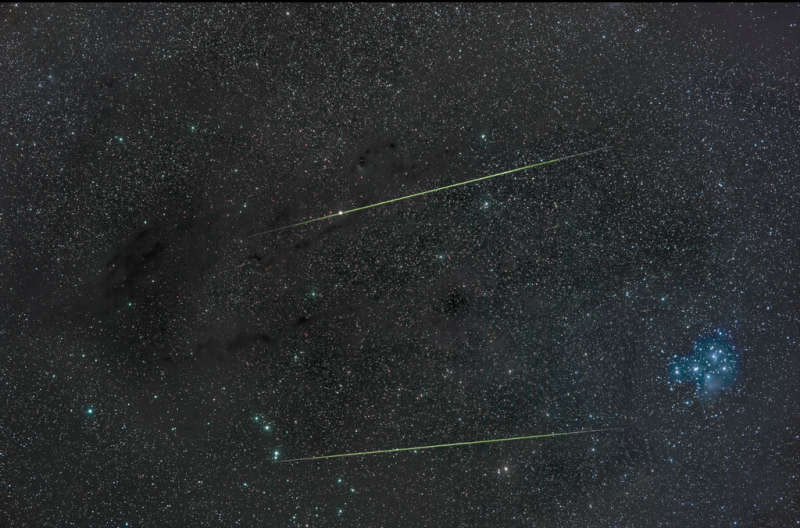Credit & Copyright: David Cortner
Explanation:
History's first known periodic comet,
Comet
Halley (1P/Halley),
returns to the inner Solar System every 76 years or so.
The famous comet made its last appearance to the naked-eye in 1986.
But dusty debris from Comet Halley
can be seen raining through planet Earth's skies
twice a year during two annual meteor showers, the
Eta
Aquarids in May
and the
Orionids
in October.
In fact,
an unhurried series
of exposures captured these two bright meteors,
vaporizing bits of Halley dust,
during the early morning hours of October 23
against a starry background along the Taurus molecular cloud.
Impacting the atmosphere at about 66 kilometers per second their
greenish
streaks point back to the
shower's radiant just north
of Orion's bright star Betelgeuse off the lower left side of
the frame.
The familiar Pleiades
star cluster anchors the dusty celestial scene at
the right.
1999 2000 2001 2002 2003 2004 2005 2006 2007 2008 2009 2010 2011 2012 2013 2014 2015 2016 2017 2018 2019 2020 2021 2022 2023 2024 2025 |
Yanvar' Fevral' Mart Aprel' Mai Iyun' Iyul' Avgust Sentyabr' Oktyabr' Noyabr' Dekabr' |
NASA Web Site Statements, Warnings, and Disclaimers
NASA Official: Jay Norris. Specific rights apply.
A service of: LHEA at NASA / GSFC
& Michigan Tech. U.
|
Publikacii s klyuchevymi slovami:
meteor shower - Meteornyi potok
Publikacii so slovami: meteor shower - Meteornyi potok | |
Sm. takzhe:
Vse publikacii na tu zhe temu >> | |
